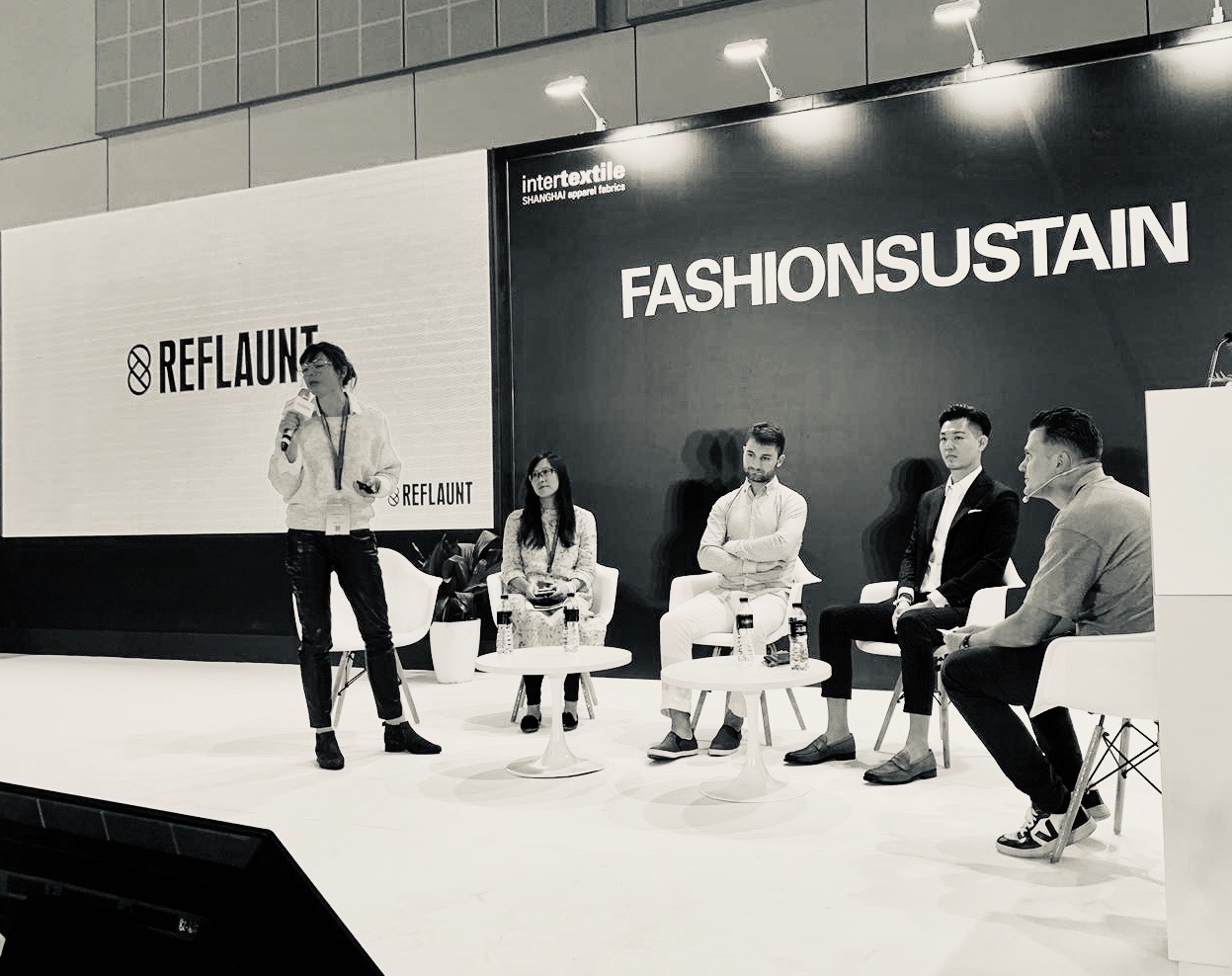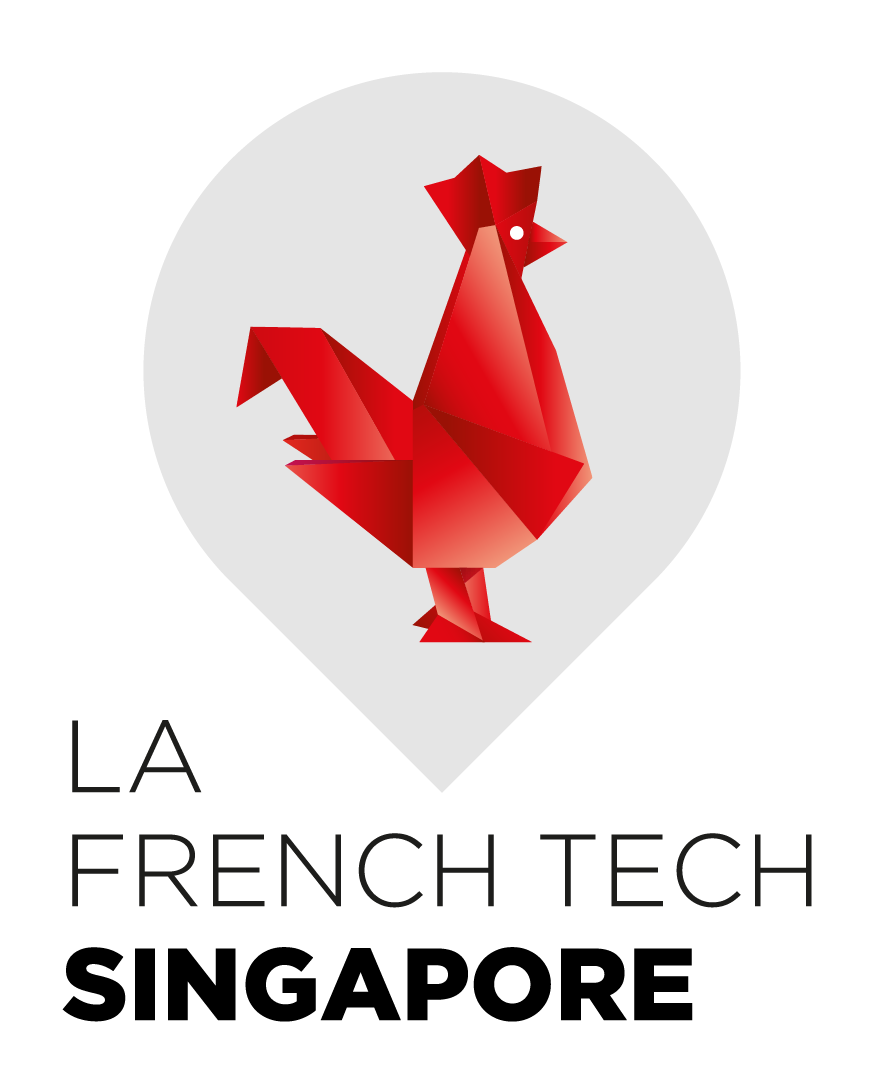
Hi Stephanie. What do you do and what brought you to Asia?
I was born in Japan, went to a boarding school in Paris, and ended up in Belgium studying business engineering. I entered Procter & Gamble as a financial analyst and became the business manager for fragrance brands (Gucci, Dolce & Gabbana, Hugo Boss and 10 other brands).
After five years, I decided to leave corporate life and took the big leap to start my own company and was looking at Asia to start the venture. We listed the different cities which seemed appropriate to launch a startup. We pinpointed Singapore on the map, took our backpacks, and flew off.
I started my first venture, StyleTribute, a second-hand luxury marketplace. It is 7 years old and is today one of the leading destinations for authenticated preloved luxury Asia.
My second venture, Reflaunt, was born out of my experience building StyleTribute and the challenges the industry was facing. Reflaunt empowers brands with the tech to capture the second-hand market and embrace the circular economy. Our plugin directly integrates within the brand’s ecosystem and allows shoppers to put back on sale their past purchases in a click of a button on a global network of dozens of marketplaces simultaneously. Its technology allows item tracking through digital blockchain traceability certification, and allows brands to leverage the powerful narrative of the circular economy while preserving their brand experience.
What was it that initially drew you to the fashion and retail industry?
I’ve always been passionate about fashion, but I have a background that has nothing to do with it. It was all about stats, business, and economics. Even though it’s always been a passion, I always minimized that hidden desire to work in that industry because it didn’t feel serious enough. For me, fashion was more of a little girl’s dream and difficult to monetize. I came to the realisation that my strengths lied in the combination of this passion and my engineering mindset.
Tell us how your love of vintage transformed into a business idea.
What drew me towards vintage goes back to the thrill of uncovering unique pieces at flea markets and hidden gems across my travels, where each item held a sense of rarity in its story. It was the driver of pursuing a passion as opposed to a profession. With that being said, the passion for vintage also stems from an environmental perspective. This started when I adopted an interest in environmental economics in university, studying the economic impact of environmental policies. At that moment, I was not sensitized to how gravely the fashion industry was affecting our environment. However, fast fashion stores were flourishing everywhere and the concept of a society of consumerism was not new. It was easy to guess that the heavy consequences of such consumerism would not spare the fashion industry. I was drawn to the sector’s economic inefficiencies and waste. I even ended up doing my thesis on REACH, a regulation addressing the production/use of chemical substances.
To merge my interests, I initially wanted to build a business repurposing vintage finds in collaboration with artists and give each piece a contemporary feel. There are so many fashion pieces that have potential and yet get thrown away.
You’ve been in the luxury sector for many years. In your opinion, what are the key challenges and opportunities in the industry?
The pandemic has shattered certain industries – fashion is one of them. Iconic brands and retailers have been wiped out.
But the industries’ model was already showing cracks before the pandemic. It has only exacerbated the need to rethink the whole model.
- Environmental issues and increasing consumer consciousness will push the luxury industry to rethink their existing business models.
Sustainability has started to evolve from being some topic in a marketing-focused CSR initiative to a priority integrated across the companies’ value chain and part of the entire business decision making. However, we still have a long way to go and iterative improvements are not sufficient anymore, there needs to be a systemic disruption.
That transition from a traditional linear model to a circular one is complex and requires changes in the whole supply chain, the economic rationales and socio-cultural beliefs on which this industry was built. - Keep up with the digital transformation. Luxury brands were late to catch the internet/digitalisation as they assume that the quality and magic of their shopping experience can only be maintained offline and that the internet impacts the exclusivity aspect of their brand. However, consumers are today increasingly choosing multichannel/omnichannel buying experiences and spend less and less time in the stores and more and more on the internet.
Opportunities
This being said, the current crisis presents a silver lining as it has accelerated the need for sustainable services like ours (repurposing services, recycling services, rental services) and helps brands pioneer sustainability.
The current context should
- accelerate online penetration
- stimulate ideas around a shift towards positive consumerism
- increase the need for retailers/brands to innovate and rethink their model.
Luxury fashion is not only about heritage, but creativity and innovation are what keeps a brand in the luxury game.
- Innovations like block-chain will help the luxury industry curb counterfeit, a 450B market. Blockchain will also drive improved transparency and traceability across their value chain
- Adapting to the growing millennials segment and meeting their shifting values (millennials and Generation Z will represent more than 45% of the overall luxury goods market). Their values are different when it comes to luxury and their perception of this category. Their expectations have also changed, luxury no longer means only heritage or classism, they are looking for brands that can deliver quality, innovation, creativity and sustainable products – Balenciaga that launches its own resell service (powered by Reflaunt), Stella McCartney that introduced sustainability to high fashion and Selfridges that launches its own rental service. Brands that efficiently embrace the new generation’s shifting cultural values and consumption habits will be winning this new generation’s mind and heart.
- New business models, especially circular models such as the second-hand market, rental business or repurposing services are growing at an unprecedented pace. The brands who will pioneer in this space will reap the benefits of strong competitive advantage.
Environmental issues are top of mind nowadays and ‘circular economy’ is all over the news. Can you unpack what it means in relation to fashion?
It’s indeed a vast concept!
We are coming from a linear economy where our growth and our GDP is fuelled by the consumption of raw materials and the manufacture of goods. There’s a linear correlation between our growth and the extraction of raw materials.
In this linear economy, the product life cycle ends with the conclusion of the customer journey – the customer gets inspired, decides to purchase, owns the product and then abandons/disposes of it. The circular economy on the other end is an umbrella concept for all business models or industrial processes which involves the reuse of resources repeatedly, rather than disposing of them.
Within the circular economy, you have models that integrate recycling, refurbishing, re-use. Second-hand marketplaces like StyleTribute, Depop, Vinted, Tradesy or Realreal exploit the highest value opportunities within a circular economy. Meaning that recycling is admittedly much better than disposing of the product, but it involves energy, manufacturing and a loss of raw material along the process. Whereas, the cycle of reuse where the product’s integrity is maintained, is free of manufacturing and energy usage.
I like to think that once customers start selling and shopping, their relation to their wardrobe changes. That they realise that by taking care of their products, certain of their pieces retain value. Once they don’t enjoy their item, they are able to recover some of that initial value and let someone else enjoy that piece they once cherished.
Another interesting implication of the rise of second-hand markets like StyleTribute is the shift in focus from the customer journey to the product life cycle – the fashion piece doesn’t ‘die’ anymore with the first customer’s journey, it lives on with the second- customer journey. Consequently, the consumer’s attention is brought to the value their product retains at its resale. Hopefully, this will induce brands/businesses to increase their efforts/investment in crafting more durable quality products, that can be passed on from hand to hand, maintaining a worthy product experience for the following users, potentially in-turn converting them into future customers.
The second-hand market is a huge untapped market, what disruption are you bringing?
Today’s firsthand market (retailers/brands) are working in a silo with the second-hand market. The same product is sold and being resold by the same customer yet going through two completely disconnected experiences. This disconnected purchase/resale experience is driving major market inefficiencies for the customers, the brands and second-hand marketplaces.
The integration of these two experiences into one seamless experience is key and addresses the extraordinary opportunities retailers and brands are missing out on in regards to the booming market.
Brands are missing a lot of opportunities:
- the sales on their own products on the second-hand
- the lack of control and traceability of their products the way their products are presented and where they are distributed, this has engendered the infamous counterfeit issue.
Indeed, today, brands have no visibility on the journey of their product beyond the sale. Reflaunt brings in the solution and allows brands to trace their products throughout its life cycle.
Each item sold through Reflaunt receives a digital id, placed on a block-chain, enabling the brand to connect with its owner, regulate its brand image and address the issue of counterfeits. - brands and retailers lose out on customer understanding, how long are my customers keeping my products, after how long are they selling them, for how much?
- the knowledge who are those customers buying my products in the second- hand market, who are they? Are they millennials? Is an unknown segment of customers? A segment of customers I should be converting to 1st hand?
- Finally, retention. What better moment of recapturing your customers than the moment they empty their wardrobe and have cash at disposal?
Once brands/retailers are convinced by the need to embrace this new market and disrupt their model to shift towards a circular one, they are faced with the biggest challenge, how do I implement this? Though which type of model? How do I integrate it into my existing operations?
The resale activity is complex, requires infrastructure and operational expertise and resources that brands and retailers often lack.
Whereas by leveraging the existing infrastructure, the existing resale market, brands can implement a circular ecosystem through a collaborative model without needing to disrupt their existing activities. Reflaunt allows this while enabling brands/retailers to keep control over their customer database, their customer experience, and building a resale experience within their own brand ecosystem.
How do you bring more diversity?
Startups are about challenging the status quo. Infusing that mindset in our corporate culture is thus essential at Reflaunt. It has started by setting an environment of trust in which the team is not afraid to voice their opinions and to express opposing views. It also means ensuring sufficient diversity, as this is one of the cornerstones of innovation and thinking outside the box. The founding team is already very reflective of our team’s diversity. My two co-founders are men from different social and academic backgrounds; it is this complementary nature that makes the entrepreneurial journey so precious and which can lead to so much value creation.
Stephanie, thank you!
If you’d like to contact her, you can find her on LinkedIn.
Get in touch with us @ womenfrenchtech at gmail dot com
In collaboration with Amel Rigneau & Emily Fang



